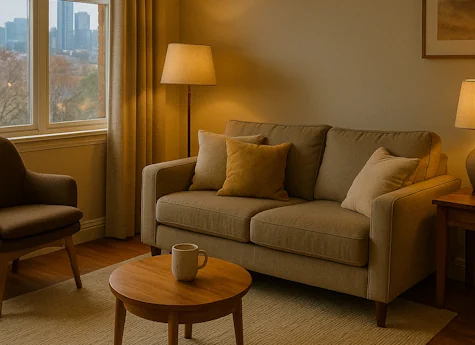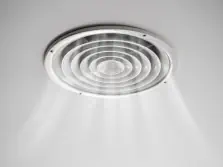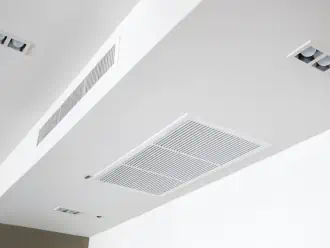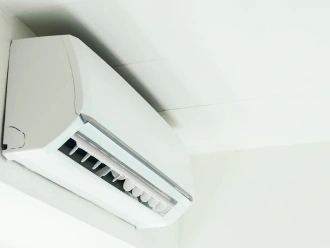
What’s the Best Heating System for Melbourne Homes in Winter?
Melbourne’s winter averages 6 to 14 degrees, with a damp cold that can penetrate brick veneer and weatherboard homes. Choosing the right heating system is critical for comfort, cost control and energy efficiency.
At Coldflow, we assess your home’s layout, existing infrastructure and usage patterns to recommend the optimal solution for your home.
The Big Three Melbourne Heating Options
1. Ducted Gas Heating
How it works
A central gas furnace heats air and distributes it through concealed ducts and ceiling or floor vents.
Sizing & Installation
- Load calculation: Based on house size, insulation, window area and orientation.
- Ductwork: Existing ducts reduce install time; new installations require ceiling or under floor access.
Cost Breakdown
- Unit & labour: $5,000 to $7,500 for a typical 3 to 4 bed home.
- Running cost: 6 to 10¢/MJ (approx. $0.07 to $0.12 per kWh of heat).
Efficiency & Controls
- Up to 6 stars on the Energy Rating Label.
- Zone dampers and programmable thermostats for targeted heating.
2. Reverse Cycle Split & Multi Head Systems
How it works
A heat pump extracts outdoor air heat, compresses it, and delivers warm air via one or more indoor units.
Single Head Splits
Ideal for single room applications (heating and or cooling).
Multi Head Splits
One outdoor condensing unit connects to multiple indoor heads, allowing independent temperature control in multiple rooms (heating or cooling).
Key Features
- Inverter technology: Adjusts compressor speed for steady temperature and 300 to 500% efficiency.
- Dual mode: Provides cooling in summer.
- Single head: $1,500 to $4,500 installed (depending on brand and size of area being air-conditioned).
- Multihead: $5,000 to $10,000 for 3 to 4 indoor units.
- Running cost: 22 ¢/kWh, effectively $0.06 to $0.07 per kWh of heat.
Pros
- Zoned comfort without ductwork.
- Efficient even in sub zero conditions.
- Easy retro fit into existing homes.
Cons
- Multiple heads raise install cost.
- Requires space for both indoor and outdoor units.
3. Ducted Refrigerated Systems
How it works
A central refrigerated fan coil unit (installed in the roof or under floor cavity) connects to ducts, distributing conditioned air throughout the home. A separate outdoor condensing unit supplies refrigerant to the fan coil.
Sizing & Installation
- System design: Similar to ducted gas, but uses refrigerant lines instead of gas.
- Ductwork: Utilises full home duct network, delivering even temperatures across your whole home.
Cost Breakdown
- Unit & labour:$8,000 to $12,000 for a 3 to 4 bed home.
- Running cost: Comparable to split systems (22 ¢/kWh) but highly efficient in heating mode.
Efficiency & Controls
- Up to 7 stars energy rated for heating and cooling.
- Compatible with zoning systems and smart thermostats.
Pros
- Whole of home temperature control with one system.
- Rebate eligibility under Victorian energy schemes.
- Quiet operation; no visible indoor units.
- Higher upfront cost than split systems.
- Requires both duct and refrigerant line installation which can be harder to retro fit.
In Conclusion
Rule of thumb, small area? Go split. Big family home with existing gas supply? You could stick with gas or go all electric reverse cycle to take advantage of Victorian Government rebates.
However, your ideal choice really depends on the size of area, budget, and how you use each room.
Coldflow Heating and Cooling offers free home assessments and tailored proposals, Book a free consultation or explore our heating systems.
View Air Conditioning Articles









 Dealer Only Brands: Daikin, Breezair, etc.
Dealer Only Brands: Daikin, Breezair, etc.
